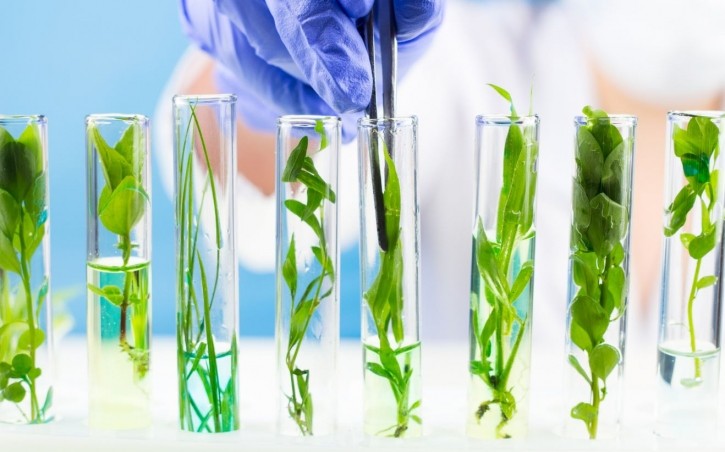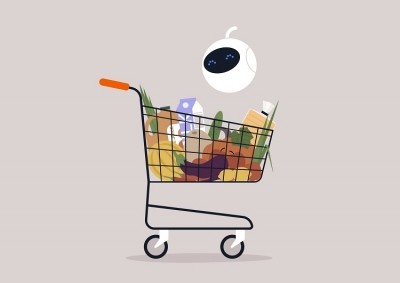Profile
How food tech start-ups can attract investors and thrive

Kim Anders Odhner has squirreled himself away in a quiet corner of his company’s Amsterdam office to talk to me on Teams. “My colleagues are being rather loud, so I thought I’d come to this little corner. But the lighting’s not that good.”
He speaks with a soft, clear American accent and once he’s adjusted the screen so we can both see each other, he’s ready to chat. His accent may be from the States, but Odhner left the country for Asia when he was a young man to work in private equity, specifically emerging market investment.
After 25 years in Asia – working on various assets including food companies, and with a few intermittent stops back in the US – he landed himself a job at Unovis Asset Management, formerly New Crop Capital, in the Netherlands.
“It was one of the first to really raise money to invest in things like Beyond Meat and companies in the alt-dairy and protein markets generally. We’ve made many investments, all of which endeavoured to remove animals from the supply chain.”
That is Unovis’s remit, to change the way agriculture works and as such the business has pumped funds into over 50 companies across the emerging food tech space. It's learnt “a lot of lessons along the way about what does and doesn’t work, as well as how to enter this space”, he explains.
Odhner is managing partner at the firm and came to the Netherlands, which is the second largest global exporter of food after the US, to set up an office and launch Unovis's second fund, which successfully raised €150m.
How to launch a food tech start-up
So why target the turbulent market of alternative dairy and meat? “It started as a bit of a philanthropic endeavour and was funded by an ethical vegan who found a good use for his money was to try and change the dependence on animal agriculture, but from the anti-cruelty angle,” says Odhner.
“At the time, there really wasn’t all that much enthusiasm about food tech, that came about after the IPO of Beyond Meat which really helped to capitalise on peoples’ aspirations to move to other proteins, but also calling it food tech really helped generate sector interest.”
That IPO was in 2019 and dubbed one of the most successful of the year. But the Beyond Meat’s hot start soon turned to smoke, going from a $5.8bn valuation to 90% of its peak just three years later.
Future Food Tech
Join Kim Anders Odhner and his panel of experts from Carrefour, Mondelez International, Mcwin Capital Partners and Fonterra at the Future Food Tech event in London 2-3 October where they will be discussing how food and drink businesses can strengthen partnerships.
The full Future Food Tech and agenda is available now and tickets to attend are still available.
To a certain extent, the successors of tomorrow are built on the graveyard of today
Beyond Meat’s story is shared by much of the alternative meat market Europe-wide, with sales not quite consistently on the rise, as well as market consolidation last year. “There must be some winners and losers [in investing] and some expectation that some of these companies won’t succeed, like with any innovation shift.”
When asked how the market can gain traction and grow again, Odhner likes to compare the alternative protein and dairy markets to the dotcom boom. “If you look at Silicon Valley, very few of those companies that existed during the boom do so now, but they formed the foundations of that technology,” he says.
“To a certain extent, the successors of tomorrow are built on the graveyard of today.”
Like with the dotcom period, there's is no straight road to success in alt-meat and dairy. Launching a brand costs a lot of money, especially in the alt-protein space which still has some consumer convincing to do. It’s also about the ecosystem around the product itself, Odhner advises.
The types of businesses alternative protein companies are targeting have very clear needs to meet. Launching a new – "even if it is the greatest" – product needs to fit those needs to succeed.
“One of the challenges we face is conversations [between supplier and retail] don’t happen frequently enough,” he explains. “We’ve seen a lot of things come to market that didn’t have a successful path to market because the channels they were targeting just weren’t suitable.
“It might be an excellent idea, that is nutritional and inexpensive to produce or sustainable to make. But new food and ingredients are competing to replace legacy products. And if it’s an ingredient, it’s not always about removing one and replacing it directly with a new one, there’s potentially a need to reformulate, which could change the customer experience.”
A challenging time for new food brands
Despite there being so many variables to work around, Odhner advocates there is space for much more food tech to come through and succeed. But to do that and thrive, a business needs to answer more than a consumer problem and consider the retailers’ needs too.
“It is a challenging time for new brands and innovators to bring products to market. But in terms of bringing a good idea forward, from my standpoint, I need to understand if there is a logical path; whether it engages, involves or includes some of those foodservice or retail needs. It needs to work in that paradigm.”
What about the future and the areas new start-ups should be targeting? Odhner believes things like meat analogues will be fairly easy to bring to the market, “but there’s a need to change the texture, and that technology itself is interesting”.
With that, his focus on what’s next would be on the technology that sits around the products. Ingredients that solve strategic problems, too, are also of interest, such as those that help with sustainability or consumer health.
But really there isn’t a unicorn product or single need Odhner could (or perhaps won’t) point to as the thing he's excited about coming through next. “Every period of innovation – and think back to the dotcom boom – promises to look tremendous and tremendous things have happened in food tech. But any one problem is not going to be resolved by a single company, it’s all about refinement.
“This space is increasingly attractive and we’re going through that innovative period and process, it’s worth billions and it’s something people need every day. So it is worth focusing on.”
Kim Anders Odhner, managing partner, Europe & Asia at Unovis Asset Management is chairing the Industry Collaboration: Strengthening Partnerships with Foodservice, Retailers & Corporates at the upcoming Future Food Tech event in London, 2-3 October.
What food and beverage manufacturers need to know
What’s the big challenge facing Europe’s F&B manufacturers?
Increasingly, and this is partially my educated belief, companies are going to come under scrutiny for the health and nutrition of what they produce. A lot of ingredients are not sustainable or that healthy and there’s going to be a focus on that.
How should F&B makers harness tech to succeed?
It comes back to ingredients. To a certain extent, companies are trying to do more with less and whether it’s about environmental degradation or sustainability challenges, big food is going to have to do more with less. It’s about innovation to not only produce more sustainably for a growing population, but also to ensure nutrition remains high. What’s happened is nutritional density has gone down because we’re under pressure to do more, faster and with longer shelf lives.
Reversing some of that negative effect of a growing industry can only be changed with innovation.
What do you think F&B start-ups get wrong?
I think there’s a disconnect between who you [the business] thinks the ultimate consumer is. You often think it’s the person with the fork in hand, but they’re often only reached through the channels that deliver that product to them and there needs to be more collaboration between maker and distributor.


















